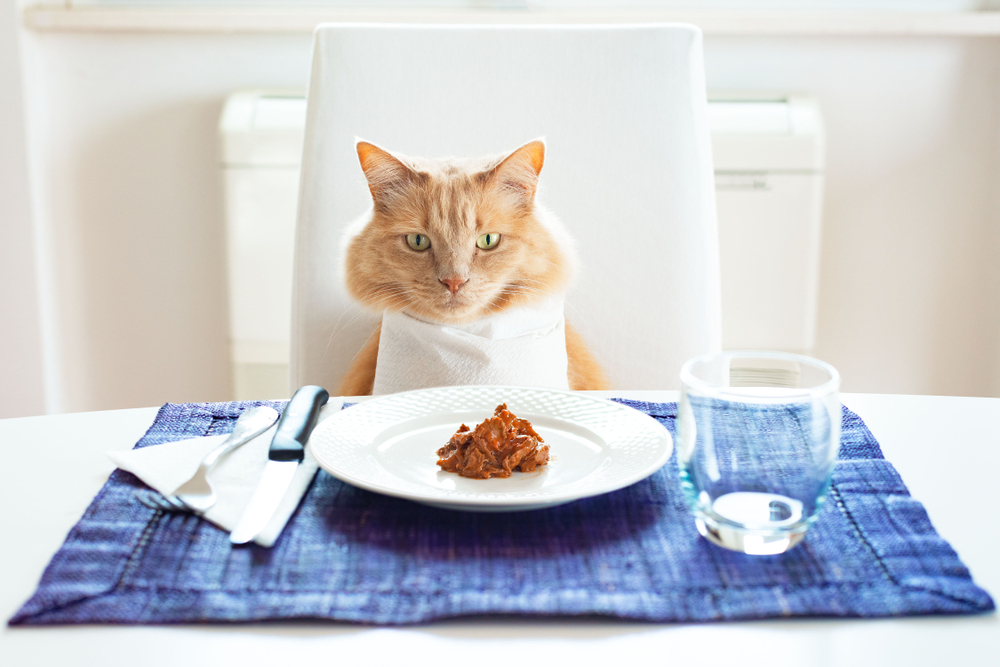DIY Guide to Homemade Cat Food

Many cat lovers are turning their attention, time, and talent to making homemade cat food, similar to the trend of dog owners preparing homemade dog food. Since pet owners want to give their beloved pets the best quality ingredients and delicious meals, it is understandable why many owners are making the switch to homemade pet diets.
While this is a great idea, there are a few things to consider before whipping up a new diet for Fluffy. Your friends at Oakland Veterinary Referral Services are here to round up the info on DIY meals for cats.
Why Homemade Cat Food?
There are several reasons for making your pet’s diet, most notably because you get to choose your own ingredients. Other reasons cats can benefit from a specialty diet might include:
- They are picky about eating certain foods. Cats can be fussy about what they eat. Making a food they like can inspire better appetite and encourage the right weight for finicky felines.
- They have food allergies. Some cats are allergic to ingredients like chicken and beef. It’s hard to know exactly what every ingredient is in a commercial diet, so a homemade one may be better for an allergic kitty.
- They have food sensitivities. If your pet is sensitive to certain ingredients or has a gastrointestinal disorder, such as IBS, a homemade meal plan can be helpful.
- You want to give your cat better ingredients. For many pet owners, they want to provide their pet with real meat, organic food, or other whole food options without preservatives, dyes, and so on.
What Goes Into Homemade Cat Food
While it may seem straightforward to feed your cat a diet made from your kitchen, there are several things to understand before you try it out. Commercial diets may seem too processed, but most do include the right balance of nutrients for the species, age, and dietary needs of pets. Crafting your own delicious kitty food requires some forethought and research.
In terms of a quality cat food, you must focus on water (moisture) and protein (lean meats). During the processing of a kibble type diet for cats, the food can lose nutritional quality and doesn’t offer your cat the added water content needed for good hydration.
Unlike dogs, your cat is an obligate carnivore and needs protein to thrive. Your cat will need amino acids, such as EPA, CLA, GLA, LA, DHA, and Omega-3s. These are all amino and fatty acids that are found in meat. As you prepare your pet’s diet of filtered or tap water and protein, you can also add in a little oil from safflower, sunflower, flax, or corn oil for skin and coat health, as well as additional nutrients.
Toxic Food Sources
There are things you should never give your cat because they are toxic or unhealthy to them. Keep the following out of your cat’s meal:
- Uncooked or frozen meat
- Raisins and grapes
- Onions and garlic
- Tomatoes
- Xylitol, a sugar-substitute
- Nuts
- A diet consisting of too much corn, rice, wheat, or other carbohydrates
Making the Transition to Homemade Cat Food
You’ll want to help your cat transition to the new diet over a period of a week to help your kitty’s system adjust. Begin by mixing a little of the homemade cat food with your cat’s existing food. Over the course of a week to 10 days, gradually increase the portion of homemade food while decreasing the portion of existing diet. Go here to get more helpful tips on transitioning your cat to a new diet.
Questions About our Cat’s Diet
When looking for homemade cat food recipes that include essential ingredients for feline diets, make sure to review the qualifications of the publisher. Look for nutritionally-complete recipes or board-certified veterinary nutritionist websites and resources before just whipping up any old meal for your purr pal. If you have questions about your cat’s health and nutrition, please do not hesitate to speak to a veterinarian.


